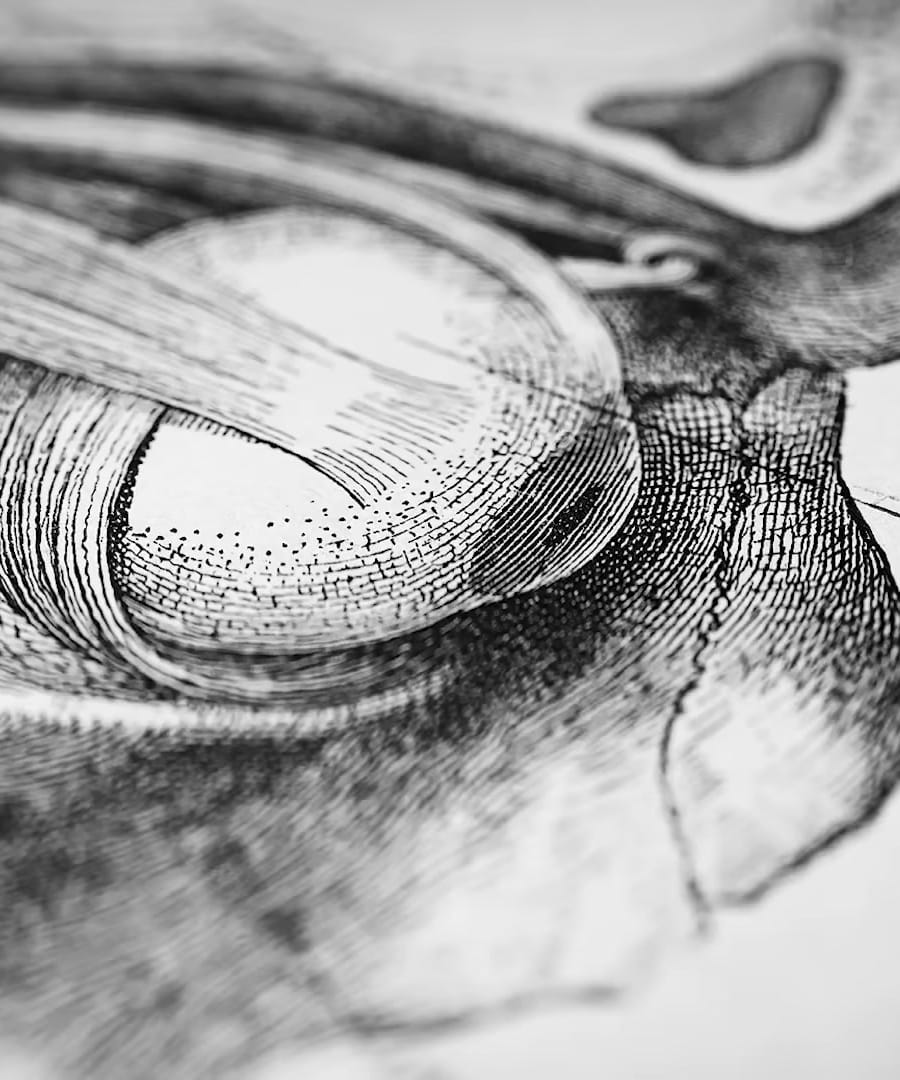What are the benefits of cold exposure?
Sources:
Cold exposure has numerous reported benefits, as pointed out by . These include:
-
Increased Metabolism & Brown Fat: Cold exposure can increase metabolism and enhance the amount of brown fat, a type of good fat that acts like a furnace to heat your body 1.
-
Dopamine Surge: There is a robust increase of baseline dopamine levels, up to 2.5 times, which is healthy and does not seem to be addictive 1. This increase in dopamine can also change your perception of time and boost frame rates of experience 1.
-
Enhanced Mental Resilience: Exposure to cold can create resilience, training your body to handle adrenaline and stress, which can be beneficial for dealing with real-life stresses 2.
-
Mood and Focus: Cold exposure can lead to substantial increases in mood and focus due to long-lasting catecholamine release, including dopamine, norepinephrine, and epinephrine 3.
-
Conversion of White Fat to Brown Fat: It can also assist in converting white fat cells into thermogenic beige or brown fat cells, aiding in weight management and reducing overall body fat 4.
-
Stress Inoculation: The practice can serve as a stress inoculator, by suppressing the activation of the sympathetic nervous system and potentially raising threshold tolerance for stress 5.
-
Maintaining Hormonal Balance: Especially in relation to fertility, cold exposure can regulate cortisol and hormone production positively. It's beneficial for both males and females in terms of fertility and hormone production by controlling stress 6.
-
Eustress Over Distress: Cold exposure induces eustress, which is a beneficial type of stress associated with increased norepinephrine and dopamine without significant increases in the stress hormone cortisol 7.
It is essential to approach cold exposure safely and progressively to prevent any potential harm.
RELATED QUESTIONS-
What are the safety guidelines for cold exposure?
Sources:
To engage in cold exposure safely and effectively, provides several guidelines on the :
-
Start at Your Comfort Level: Begin with temperatures that are uncomfortably cold but safe to stay in. The exact temperature that is considered "safe" varies between individuals and is affected by factors like cold tolerance and metabolism 1.
-
Progress Gradually: Do not immediately jump into extremely cold environments. Gradual progression helps adapt the body and prevent shock 2.
-
Frequency and Duration: Aim for a total of at least 11 minutes per week of deliberate cold exposure, divided into sessions throughout the week. As you get comfortable, adjust the temperature, duration, or frequency as needed 3.
-
Avoid After Certain Activities: If the goal is muscle hypertrophy or strength, avoid cold exposure such as ice baths for up to four hours after strength training to prevent potential interference with muscle adaptation 2.
-
Safety Precautions: Never combine hyperventilation, breathing exercises, or breath holding with cold exposure, as this can increase the risk of passing out or even death 4.
-
Consult a Physician: Always consult with a healthcare professional, particularly if you have any pre-existing conditions that may be affected by cold exposure 5.
Remember, these guidelines are a starting point, and personal experience, as well as continual reassessment of your body's responses, are important to determine the appropriate level of cold exposure for yourself.
RELATED QUESTIONS-
What are the risks associated with cold exposure?
Sources:
Risks associated with cold exposure, as outlined by , include the following:
-
Individual Risk Factors: Ideal cold exposure temperatures vary by individual depending on cold tolerance and core metabolism. Abruptly entering extremely cold environments, like lakes with ice holes, can be hazardous for those untrained or unaware of their reactions to such conditions 1.
-
Cold Shock Response: Rapid cold exposure can trigger a cold shock response. This can lead to a dangerous increase in heart rate and blood pressure, potentially causing fatal consequences like a heart attack 1.
-
Cognitive Impairment: Exposure to cold water can lead to a significant temporary reduction in cognitive function, particularly affecting the frontal cortex 2. This cognitive decline can hinder decision-making and responses to emergencies.
-
Physical Strain: Deliberate cold exposure, particularly for the unaccustomed, places significant physical strain on the body, requiring careful moderation 3.
-
Potential Drowning Risk: The nervous system's initial reaction to cold water can cause a momentary loss of breathing control, increasing the risk of drowning, even in relatively safe conditions 3.
-
Inadequate Healing: Engaging in cold exposure when feeling sick, especially due to respiratory infections, is usually not recommended. Warm conditions are generally safer for recovery 4.
-
Increased Exposure During Illness: If you're contracting or have contracted a cold or virus, deliberate cold exposure or cyclic hyperventilation breathing may worsen the condition. Warm showers or baths may be advantageous during illness instead 5.
advises progressing gradually into the cold, beginning with levels of discomfort that are within safe limits, and adjusting based on personal responses to prevent the risks associated with cold exposure.
RELATED QUESTIONS-
Can you provide more research on the effects of cold exposure?
Sources:
The research on the effects of cold exposure discussed by covers various physiological and psychological benefits:
-
Metabolism and Brown Fat:
- A study found that 11 minutes of weekly cold water immersion increased brown fat thermogenesis and core body temperature, leading to a rise in core body metabolism. Adaptations occur in the white fat cells, converting them to more metabolically active beige and brown fat cells 1.
-
Mood and Mental Acuity:
- Deliberate cold exposure was shown to produce significant increases in norepinephrine (530%) and dopamine (250%) in blood plasma, enhancing attention, wellbeing, and mood. These neurotransmitters are closely associated with the effects of addictive behaviors, but through cold exposure, they can be elevated in a positive, non-addictive manner 2.
-
Physical and Athletic Performance:
- Cold water immersion seems to be an effective recovery tool after high-intensity exercise. It improves muscle power and reduces muscle soreness. However, it should be noted that it may not benefit certain types of training, such as eccentric exercise 3.
-
Anxiety Regulation and Fat Loss:
- Deliberate cold exposure has been linked to better regulation of anxiety, despite initially causing anxiety in some people. Notably, studies have pointed to reductions in waist circumference and abdominal fat after repeated cold exposure 4.
-
Immune System Function:
- Repeated cold exposure may trend toward enhanced immune response, with indicators such as increased plasma concentrations of IL-6 and elevated total numbers of various lymphocytes. However, these trends are not definitive and vary with the conditions of cold exposure 5.
-
Interplay with Fasting:
- Fasting states can amplify the effects of cold exposure on metabolism due to baseline elevations of norepinephrine and epinephrine. Combining fasting with cold exposure can potentially lead to greater metabolic and resilience benefits 6.
These benefits are backed by studies that control for confounding factors and explore the mechanistic pathways involved in the body's response to cold. Each study has its own limitations, and further research on both genders and different protocols may provide a more comprehensive understanding of cold exposure's effects.
RELATED QUESTIONS-
Can you provide more research on the effects of cold exposure?
Sources:
has shared multiple insights on the effects of cold exposure:
-
Metabolic Changes: Deliberate cold exposure, such as cold water immersion for 11 minutes per week, can increase brown fat thermogenesis and core body temperature, leading to an increase in core body metabolism. The changes in fat stores, converting white fat into more metabolically active beige and brown fat, are significant effects of cold exposure 1.
-
Catecholamine Increase: When subjects were immersed in cold water, they experienced substantial increases in norepinephrine (530%) and dopamine (250%), which are linked to enhanced attention, mood, wellbeing, and can be long-lasting. These neurochemical changes following cold exposure could explain the reported mental benefits 2.
-
Mood and Focus: People often report an enhancement in mood and the ability to focus after cold exposure. These experiences are likely related to the substantial increases in catecholamines, particularly dopamine, norepinephrine, and epinephrine 3.
-
Anxiety and Fat Loss: Cold exposure was found to improve regulation of anxiety and resulted in a reduction in waist circumference and abdominal fat. The study mentioned reported that men experienced a significant reduction in abdominal fat after eight weeks of cold exposure 4.
-
Post-Exercise Recovery: Cold water immersion after high-intensity exercise can be an effective recovery tool. It improved muscle power, reduced muscle soreness, and increased perceived recovery 24 hours after exercise. However, it might not be beneficial for certain types of exercise, like eccentric exercise 5.
-
Immune System Function: Cold exposure, done repeatedly over three times per week for a period of about six weeks, showed trends towards increased immune system function, demonstrated by higher plasma concentrations of IL-6 and increased numbers of various lymphocytes 6.
-
Interplay with Diet: Combining deliberate cold exposure with fasting states, which elevate baseline levels of norepinephrine and epinephrine, could amplify the metabolic and resilience benefits 7.
-
Fat Conversion and Metabolic Enhancement: Cold exposure can lead to genetic changes in white fat cells, converting them to beige and brown fat cells, promoting increased metabolism. These cells have more mitochondria, converting fat to thermogenically viable molecules 8 7.
Dr. Huberman touches upon the mechanistic pathways of these effects, mentioning that catecholamines bind to receptors on white fat cells, triggering the release of molecules like UCP1 that foster the conversion of fat cells into more metabolically active forms 7.
RELATED QUESTIONS-
What are the best supplements to take?
Sources:
emphasizes the importance of a rational approach to supplementation, taking into account individual needs and the quality of supplements. Here’s a list of some key supplements mentioned in various discussions:
-
General Nutrition: Athletic Greens are suggested as a comprehensive blend of nutrients that include adaptogens, probiotics, vitamins, and digestive enzymes, making it a solid choice for foundational nutritional needs 1.
-
Magnesium: Different forms of magnesium are recommended for various purposes, such as magnesium threonate and bisglycinate for sleep 2.
-
Creatine Monohydrate: Ideal for physical size adjustment, creatine is excellent for fitness and doesn't rely on timing; usually 3-5 grams per day is standard 3.
-
Omega-3 Fatty Acids: Supplementation with omega-3s, particularly EPA, is suggested to potentially improve cognitive function, mood, and general health, with recommendations to ingest 1-3 grams of EPA per day 4.
-
Vitamins: Consideration of individual dietary needs and budgets is necessary when deciding whether to take a vitamin supplement. Non-processed or minimally processed foods should provide most vitamins and minerals 5.
-
Dopamine Boosters: Mucuna pruriens, L-tyrosine, and phenylethylamine can increase dopamine, but they require careful consideration of dosages and potential side effects 6.
Dr. Huberman advises using single ingredient supplements to tailor dosages and combinations to individual needs and to enable tracking of what works and what doesn’t. Additionally, factors such as safety, cost, specific health goals, and dietary habits are important when developing a supplement regimen 7 8.
Always consult with a healthcare provider before starting a new supplement regimen, particularly for any targeted health outcomes or when combining supplements with prescription medications or other health interventions.
RELATED QUESTIONS-
Can you tell me more about the basics of supplementation?
Sources:
The basics of supplementation, as discussed by on the , involve several key guidelines and concepts:
-
Supplement Variety: Supplements encompass more than just food replacements. They include a range of compounds that can be valuable for different health purposes, such as enhancing sleep, hormone function, or focus 1.
-
Rational Approach: It is crucial to develop a rational supplementation regimen. Consider safety, cost, and specific health goals you want to achieve with the supplements 1.
-
Foundational Supplements: Foundational supplements typically contain a blend of vitamins, minerals, probiotics, digestive enzymes, and sometimes adaptogens—compounds that help the body and brain manage stress 2.
-
Quality of Ingredients: Prioritize supplements that contain high-quality ingredients sprawling across various categories to ensure broad health support 3.
-
Nutrition and Supplements Interplay: Supplements should add to a solid nutritional foundation and are not meant to replace the essential behaviors leading to mental and physical health 4.
-
Multi-Ingredient Formulations: For foundational health support, multi-ingredient supplements that cover various bases might be advantageous 5.
Dr. Huberman also often reminds listeners that good dietary habits cannot be neglected in favor of supplementation. Nutrition provides essential macronutrients and micronutrients conducive to health, on top of which some supplements can add additional benefits 3. Always consider consulting with a healthcare provider to establish a personalized and safe supplementation plan tailored to your individual needs.
RELATED QUESTIONS-
What are the benefits of cold exposure?
- RELATED QUESTIONS
What are the safety guidelines for cold exposure?
- RELATED QUESTIONS
What are the risks associated with cold exposure?
- RELATED QUESTIONS
Can you provide more research on the effects of cold exposure?
- RELATED QUESTIONS
Can you provide more research on the effects of cold exposure?
- RELATED QUESTIONS
What are the best supplements to take?
- RELATED QUESTIONS
Can you tell me more about the basics of supplementation?
- RELATED QUESTIONS
































